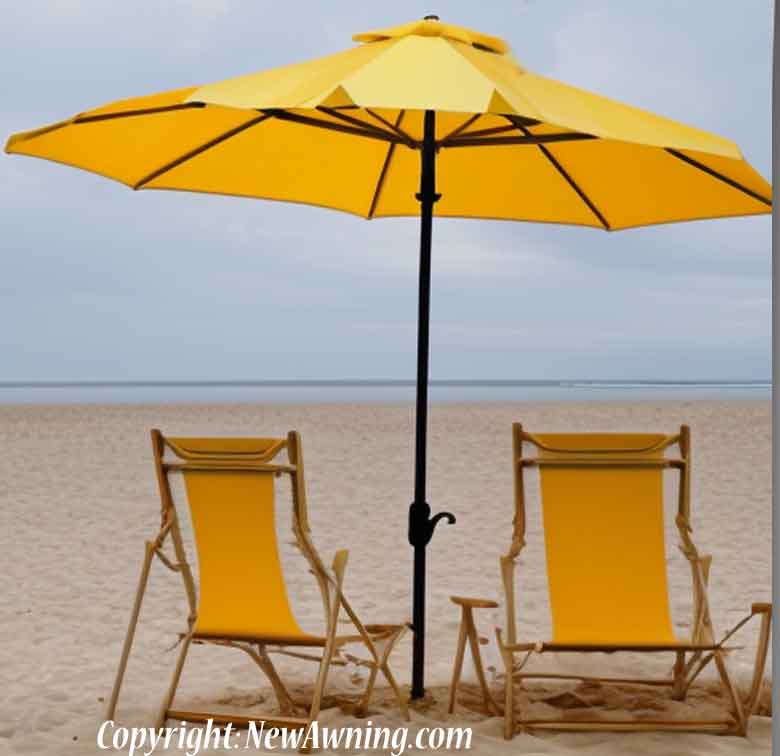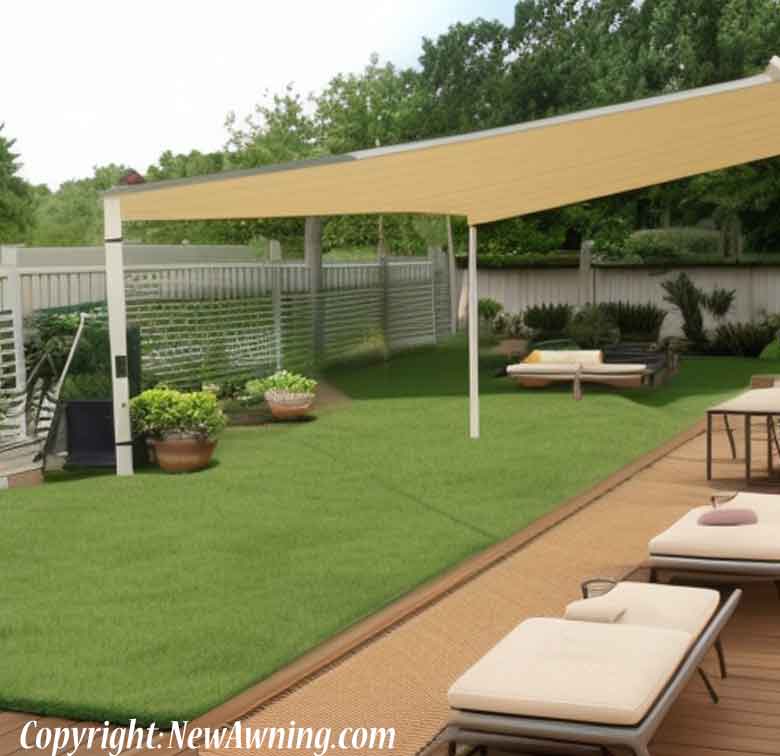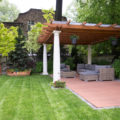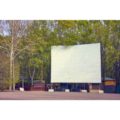Last Updated:June 14, 2025
Shade and Shelter Experience: A Guide to Pop Up Shade Canopy

Introduction to Pop-Up Canopy Tents: Your Ultimate Guide
Whether you’re a seasoned camper or a first-time outdoor enthusiast, you’ll come to appreciate the benefits of having a reliable shelter – and that’s where pop-up canopy tents come into play. There’s no doubt that these tents, also known as pop-up canopies, offer a quick and convenient setup, making them ideal for various outdoor events and activities.
But with numerous options available, you might find it challenging to pick the perfect pop up tent that will cater to your specific needs. That’s why this guide has been designed to help you navigate the vast sea of pop-up tent options and break down what’s crucial for you to consider.
A worthy pop-up canopy should offer more than just instant shelter; it should provide protection from harmful UV rays, withstand high winds, and even endure heavy rainfall. It’s not enough to pick any pop-up canopy or pop-up tent for your adventure, as different conditions and activities necessitate various features. So, whether its for a barbecue party, tailgating, or a weekend camping trip, this ultimate guide will take you through the need-to-knows, ensuring you pick the best suitable pop-up or tent for your outdoor ventures.
Quality, durability, size, and ease of setup are just a few things you’ll need to keep in mind when choosing pop-up canopies or canopy tents. With the help of this guide, you’ll be well-equipped to make a knowledgeable decision and enjoy the great outdoors with peace of mind.

Understanding the Basics of Canopy Tent Material
After you’ve got a basic understanding from our “Introduction to Pop-Up Canopy Tents: Your Ultimate Guide”, it’s time to delve deeper into the specifics – specifically the canopy tent material. The fabric or material selected for canopies is a fundamental aspect of their functionality and durability. It’s not just about choosing a canopy tent, but also about figuring out which material best suits your needs.
When it comes to canopy tents, you’ll find there’s a range of materials available. However, one of the most commonly used materials is polyester. Now, you may be thinking, why polyester? It’s affordable, lightweight, and known for its resistance to water, mould, mildew, and UV rays – perfect for a pop-up shade canopy! But more importantly, its durability makes it a top contender as a canopy tent material.
The choice of material largely depends on how and where you plan to use your pop-up tent. For harsher weather conditions, consider canopy tents materials that are thicker and more insulated. For ordinary outdoor gatherings, a lighter material should suffice. Don’t forget to bear in mind that materials with UV protection should be a priority if the canopy tent will be used in sunnier climates or during hotter parts of the day.
Always remember that knowledge about the canopy tent materials is essential when choosing pop-up canopies. We trust this review will help inform your decision. After all, whether it’s for leisure or business, your pop-up canopy tent should last and serve its purpose well.
Choosing the Right Shade: Pop-Up Canopies and Water Resistance
There’s a lot more to selecting the right pop-up canopies than meets the eye; particularly when it comes to ensuring they can stand up to challenging weather conditions. It all comes down to one crucial factor: water resistance. For those who might not be aware, not every pop-up canopy will offer the same level of protection against water, and this can certainly make a big difference.
In looking for a suitable canopy, it’s essential to scour the market for options crafted from resistant materials. The primary goal here is to ensure you’re investing in a canopy that’s designed to withstand rain or any form of moisture that could potentially ruin your outdoor event. It’s worth noting, however, that being ‘water-resistant’ does not always equate to being fully ‘waterproof’.
A water-resistant pop-up shade has been treated to resist water penetration to a certain degree but might not entirely keep out water. On the other hand, a waterproof pop-up canopy is designed to be completely impervious to water. Therefore, depending on your specific needs and the weather conditions, you might require something that’s water-resistant or a canopy that is entirely waterproof.
By providing you with the right shade combined with efficient water resistance, pop-up canopies can significantly elevate your outdoor experience. So, before settling on one, pay close attention to the water resistance properties of the pop-up tent you are considering. The right pop-up canopy can make all the difference, ensuring you are prepared to handle whatever mother nature might throw your way.
How to Choose your Perfect Pop-Up Canopy: Factors to Consider
When you’re looking to buy your perfect pop-up canopy tent, there are a number of factors to consider. You’ve learned about the basics of canopy tent materials, understood the significance of pop-up canopies, and also got a grasp on water resistance, now it’s time to dive deeper into custom canopy tents. Everyone has unique needs and custom canopies are a go-to solution to cater to those demands. While ready-made pop-up canopies are good, having that custom touch can provide an extra edge. For instance, you may want your logo emblazoned on the canopy, or perhaps you need a specific size that’s not commonly available. Here, custom canopy tents step in to meet your bespoke needs.
Another important aspect to consider is portability. A portable canopy is ideal, especially if you’re a regular at outdoor events, farmers markets, or sporting events. Canopy tents should be easy to set up and break down, and light enough to transport without too much hassle. Don’t forget, standard pop-up canopies might work for a while, but considering a custom option could potentially increase the overall usability and longevity of your tent.
As you can see, buying a pop-up canopy tent is about more than just picking out a good-looking tent. Your choices should be guided by factors such as material, size, custom features, and portability. So, whether choosing between standard pop-up canopies or custom canopy tents, be sure to make a decision that will best serve your needs, not only today but in the long run as well.
Differences Between Canopy Tents and Pop-Up Tents
When talking about canopy tents and pop-up tents, it’s important to know that they are not interchangeable terms. There are key differences in their design, practicality, and use. Canopy tents are typically larger, with a firm structure that offers substantial coverage. They’re perfect for outdoor events where a significant area needs to be shaded, like weddings or large garden parties. Their design is robust, often including metal frames and heavy-duty canopy material that can withstand various weather conditions.
On the other hand, pop-up tents are designed with simplicity and speed in mind. They’re smaller, lightweight, and incredibly easy to set up, hence the name ‘pop-up’. They can provide quick shade for a small group or a picnic in the park. Although they’re not as durable as canopy tents, they are portable and ideally suited for short-term applications or occasional use. The tent’s design enables quick assembly and disassembly, saving a lot of time and energy.
In comparison, both tents provide protection and shade, but they serve different purposes. Your choice between a canopy tent and a pop-up tent will surely depend on your specific needs. If you require something sturdy, spacious, and durable for a big event, opt for a canopy tent. But if you’re camping or simply need a quick shade on a sunny day, a pop-up tent would suffice. This guide breaks down these differences to help you make an informed decision about your perfect pop-up canopy.
Striking Out: A Comprehensive Guide to Setting Up Your Pop-Up Canopy Tent
Adventure awaits as we continue striking out into the open and embarking on a thrilling escapade with our trusty pop-up canopy tent. This comprehensive guide will aid you as you set up your tent for those spontaneous outdoor fiestas or even a good old-fashioned camping trip. Setting up a pop-up canopy tent is an art form that requires the right knowledge and a dash of patience. Let’s tackle the steps and ensure that you’ll have a well-anchored shade at your disposal.
First things first, you need to assess the area where you’re planning to set up your pop-up canopy. Ensure that it’s flat and relatively uninhibited by any potential hazards. Pay attention to the ground conditions and make tweaks to your set-up process. In our guide, we elaborated on how to differentiate between canopy tents and pop-up tents, this knowledge will certainly help you in your setup. For instance, pop-up tents usually have a quicker setup time and are generally more straightforward to erect compared to canopy tents.
After you’ve assembled the frame, it’s time to attach the canopy. Remember how we discussed the importance of water resistance? Ensure to apply those lessons as you secure the canopy. Finally, anchor down your pop-up canopy tent; this is essential for outdoor events, as unpredictable weather conditions could disrupt your entire set-up. You’ve now mastered the art of setting up a pop-up canopy tent, and are set for all your future equipment needs. Enjoy the tranquility and sense of accomplishment that comes with perfecting this skill.
Maintaining and Caring for Your Pop-Up Canopy: Tips and Tricks
Caring for your pop-up canopy doesn’t have to be tough. In fact, with a few simple tips and tricks, you can ensure your canopy stays in top shape for years to come. Whether you’ve decided on a fabric canopy, or an alternative, the principles remain the same.
First things first, cleanliness is vital when maintaining your pop-up canopy. Over time, dirt and grime can build up and lead to potential damage. Regular, gentle cleaning can help extend the lifespan of your canopy. Start by brushing off any dry dirt before you pack away your canopy. For a deeper cleaning, a gentle wipe with warm soapy water can work wonders. Always make sure your canopy is dry before storing it to avoid mildew and mold.
Next up, storage. Keeping your pop-up canopy in a protective case when not in use is a great way to prevent unnecessary wear and tear. A case designed to fit your canopy perfectly will also make storing your canopy much easier and more convenient.
Lastly, regular inspections can be the key to spotting and fixing small issues as they arise. Don’t wait for visible damage to pop up! Always inspect your pop-up canopy for signs of wear and tear, and address them promptly. Regular maintenance is as important to your pop-up canopy as it is to a car; it ensures that your investment stays in top shape for as long as possible.
By following these tips and tricks, you’ll be able to enjoy your pop-up canopy for many sun-soaked seasons to come.
Checking for Wear and Tear on Your Pop-Up Tent
Ensuring the longevity of your pop-up tent significantly correlates to how well you maintain it. Given that maintaining and caring for your pop-up canopy necessitates regular checking for wear and tear, it’s definitely a factor you cannot overlook. Understanding the basic tent maintenance begins with acknowledging the importance of looking for any potential issues that might compromise the structural integrity of your pop-up tent.
Start by examining the tent frame. This critical component of all pop-up tents shoulders the majority of the wear and tear. Regular scrutiny will highlight any cracks or breaks, enabling you to address the problem promptly. Occasionally, the condition worsens unnoticed, diminishing the tent’s efficiency. Remember, the better you maintain the tent frame, the longer your pop-up tent will last.
Additionally, keep a close eye on the canopy tent material. Often, this vital aspect of pop-up canopies succumbs to constant folding and unfolding, stretching, and harsh weather conditions. Identifying early signs of wear can help forestall bigger repairs.
Our step-by-step guide to setting up your pop-up canopy tent provides solid clues to spotting wear and tear during assembly. If your tent doesn’t set up as smoothly as before, or if there are unconventional bulges or pulls, it might be time to give it a little extra care. As always, effective tent maintenance is a proactive endeavor. Persevering in checking for wear and tear goes a long way in extending the life and functionality of your tents.
Pop-Up Canopies Troubleshooting: Advanced Guide
Moving further into our comprehensive guide titled “Your Ultimate Guide to Pop Up Shade Canopy: Choosing Pop-up Canopies, Canopy Tents, and Pop Up Tents,” we delve into the realm of pop-up canopies troubleshooting. In our advanced guide, we’ll address various complications that you might encounter with your tent frame, specifically focussing on the popular frame canopy choices, aluminum and steel. These materials, while sturdy, aren’t immune to issues, and it’s important to sharpen your troubleshooting skills to maintain the longevity of your pop-up canopies.
Getting to the root of a problem with your pop-up tent shouldn’t be daunting if you’ve thoroughly read our previous entries such as: “How to Choose Your Perfect Pop-Up Canopy: Factors to Consider”, “Checking for Wear and Tear on Your Pop-Up Tent”, and “Maintaining and Caring for Your Pop-Up Canopy: Tips and Tricks.” With this in-depth understanding, certain anomalies will immediately stand out such as bent or warped steel and aluminum frame canopy components. These are often indications that there is undue stress on particular parts of your pop-up canopies, which if left untreated, can lead to tear and serious damage.
Our goal in this advanced guide is to ensure that your canopy tents and pop-up tents serve you optimally for the longest time possible. So, buckle up as we take a leap into detailed troubleshooting strategies for your pop-up canopies, anchoring on the principles you’ve learnt in previous sections and expanding them to meet your advanced troubleshooting needs.
Customizing Your Pop-Up Canopy: Going Beyond the Usual
Buyers looking to step up their pop-up canopy game should focus on customizing their selection, as this approach lets them truly stand out by going beyond the usual. A custom pop-up canopy can testify to your brand or personal style, while still providing benefit inherent to the product, such as shade or protection against the elements. However, canopy customization encompasses more than just picking a color or size.
From stunning digital banners highlighting your brand, to unique material choices or modified shapes, the sky’s the limit when it comes to your custom design. One widespread and effective customization option is the usage of customized graphics or logos. These not only enhance the visual appeal of the pop-up canopy but also serve as effective promotional tools especially for businesses.
The process of customizing doesn’t have to be daunting, with many vendors providing custom design options built into their product offerings. When selecting a design, be mindful of its impact on the overall look and functionality of the pop-up canopy. Its layout and use of colors should ideally match the theme of your event or the logo of your company if you’re planning to use it commercially.
Furthermore, customizing should ideally be as flexible as possible; for instance, a changeable banner would be a wise choice. This allows for varied graphics representing diverse campaigns or events without unnecessary additional costs. In conclusion, by customizing, you’re making a pop-up canopy that’s distinctly yours while still maintaining its functional integrity and increasing its attractiveness.
Event Canopy Tents and Pop-Up Canopies: A Growing Trend
In recent times, there’s seen a growing trend in the use of event canopy tents and pop-up canopies for both indoor and outdoor events. Their widespread adoption attributes to their convenience and the value-added charm they bring to any event. The growing taste for these tents at events might be due, in part, to their versatility. There’s no denying, event canopy tents and pop-up canopies have become a staple at trade shows, where they serve as branded micro-venues, drawing attention and pitching company offerings in refreshing, compelling ways.
Notably, the trend isn’t confined to public spaces alone. Private events too, from weddings to garden parties, are increasingly adopting event canopy tents, and they’re becoming a pretty regular feature. Furthermore, pop-up canopies provide a hassle-free, temporary lodging solution, making them an attractive option for hosting outdoor events. Outdoor lovers are using them as a mode of enhancing their experience, whether at a beach barbecue, a picnic or a camping trip, and these pop-up canopies certainly live up to the occasion.
The indoor versatility of these tents too, cannot be understated. They’ve seen use in various indoor events, such as trade shows, where they enhance exhibitors’ visibility significantly. Consequently, the trend continues to grow, driven by the multiple benefits and convenience these pop-up canopies offer. So whether you’re planning an indoor or an outdoor event, considering incorporating a pop-up canopy could be a great move worth pondering. Get ahead of the trends, and become part of the growing group making the most of these versatile pop-up canopies.
Exploring the Allure of Canopy Material and Stock Tents
In the world of pop-up canopies, the lure of exploring different types of canopy material is irresistible. The allure lies not just in the aesthetic pleasure it provides, but also in its practical functionality. It’s hard to deny the attraction of well-designed stock tents, with their promise of instant shelter and comfort. These tents, made from the finest heavy-duty canopy fabric, offer a robust solution for outdoor events, whether it’s a garden party or a music festival.
Polyester is the fabric of choice for many canopy tents and pop-up tents, thanks to its durability and weather-resistance. This material is hard-wearing and requires minimal maintenance, qualities necessary for a long-lasting shelter. Yet, there’s more to canopy material than just polyester. Exploring alternatives can unlock a plethora of benefits – from improved UV protection to enhanced design.
Whether you’re seeking the best shade for your pop-up canopy or simply want to update your existing tent, examining the different canopy materials available out there is crucial. You might be surprised by how much effect the right canopy material can have on the performance and appearance of your stock tents. Master the art of choosing the perfect material, and you can transform any spot into a cozy retreat or a buzzing party scene with ease.
After all, the allure of canopy materials and stock tents lies in their ability to create instant, inviting spaces. So, keep exploring, because your perfect canopy tent is out there, waiting to be uncovered.
Ensuring Proper Storage for Your Pop-Up Canopy Frame
Taking care of your pop-up canopy frame goes beyond just cleaning and checking for wear and tear. It involves ensuring proper storage for the frame as well. Proper safekeeping not only prolongs the life of your pop-up canopy, but it also ensures that it remains in prime condition for your events, be it a tailgate party, a camping trip, or an outdoor fair. Here’s how you can ensure the proper storage of your canopy’s frame.
First up, always store your frame in its case. That’s not negotiable. The case serves to protect it from dirt, moisture, and direct sunlight, all of which can speed up the wear and tear process. Moreover, cases are designed to make storage and transportation easy and convenient, so there’s no reason not to use them. If your pop-up canopy did not come with one, it’s advisable that you purchase one separately. Care enough for your frame to keep it safe in a case.
Next up, always take the time to clean your pop-up canopy frame before storing it. A quick wipe down with a moist cloth will suffice. This helps to remove dirt and grit that could scratch or score the frame during storage.
Lastly, be mindful of where you store the case containing your pop-up canopy frame. Choose a cool, dry place that is free of direct sunlight. This helps to prevent potential damage from extreme temperatures and humidity. With these storage tips, the longevity and performance of your pop-up canopy frame are guaranteed.
Rotating Usage and Staying Updated on Canopy Warranty
Understanding the value of rotating usage of your pop-up canopy is not only essential to the longevity of the product, but it’s also a smart practice that helps you tailor your use to seasonal needs. Typically, canopy usage intensifies during the summer months, leading to possible wear and tear if not properly managed. That’s why it’s important to keep an eye on the usage frequency and ensure you’re not overworking your canopy. The warranty of your pop-up canopy often covers potential damage instances caused by normal use, however, prolonged heavy use might impact its validity.
Canopy warranty provisions vary among manufacturers. Some offer extravagant warranties covering a broad spectrum of damages, while others narrow their coverage to specifiable defects. It’s vital to stay updated on your canopy warranty terms and conditions. Reading the fine print might seem tedious, but it’s the best way to understand what’s covered, especially if your canopy usage pattern could influence the warranty. It’s recommended to immediately address any emerging issues to the manufacturer to gain from your warranty benefits. Also, consider having an extra canopy. This helps reduce the risk of overuse, and ensures you always have a backup pop-up canopy to use in case of any unforeseen circumstances.
Just like with any bit of kit, rotating usage and understanding your canopy warranty and what it covers will keep your pop-up canopy serving you well for many outdoor adventures to come.
Epic Guide to Advertising with Pop-Up Shade Canopies
Welcome to our epic guide on advertising with pop-up shade canopies. This brilliant marketing tool has been making an impact in the commercial world. From trade shows to the beach, these shade providers are designed to command attention, particularly with the addition of advertising flags that add an element of dynamism. They’re not only versatile in their application but also easy to set up, maintain, and store. Exactly what’s needed for a show-stopping, eye-catching display.
Choosing between pop-up tents and canopies can be challenging, hence your guide to understanding what makes them different. It’s important to consider factors like material, water resistance, and ease of setup when selecting your pop-up canopy. You don’t want to be left struggling in the mid-day beach sun or in the midst of a bustling trade show. A canopy tent may thus be a perfect choice, its construction aiming for better shade provision.
Caring for and maintaining these canopies have been a common concern. However, with proper storage and regular checks for wear and tear, you can ensure your pop-up canopy lasts longer. Don’t forget to stay updated with the warranty details to secure your investment. Customizing these tents takes your advertising a step further, making them a growing trend at events. The allure of different canopy materials and their unique presentations have an undeniable charm. Following these guidelines, your venture into advertising with pop-up shade canopies should be a satisfying and fruitful experience.
FAQs: Concluding Your Comprehensive Guide to Pop-Up Canopy Tents
We’re now wrapping it up – you’re viewing the concluding part of our comprehensive guide to pop-up canopy tents. We’ve covered from the introductory lessons to the complexities involved when customizing and setting up your canopy. We’ve let you in on how to choose your perfect pop-up canopy, bearing in mind factors such as material, water resistance, and conditions for usage. Great insights have been shared on the notable difference between canopy tents and pop-up-canopy tents. Now, it’s time to take into account some FAQs.
We’ve laid out the answers in an easy-to-shop format, essentially striking out the hurdles that commonly stand in your way. We’ve provided practical tips and tricks on maintaining and caring for your pop-up canopy, to keep it in the best working condition. We’ve detailed the process of checking for wear, tear, and pressure on your pop-up tent. The guide also dispels doubts about proper storage, ensuring your pop-up canopy frame doesn’t come to any harm.
Moreover, we have handled the ins and outs of commercial use, displays, and advertising with pop-up shade canopies. Our rotating coverage ensures you stay on top of your game, up-to-date with your canopy warranty and all that’s pop in the industry. We’ve taken you beyond the usual, exploring the allure of different canopy materials, including stock tents. And as you cart out this guide, remember, your pop-up canopy should not only serve but also outlast its intended purpose, making your investment worthwhile.




